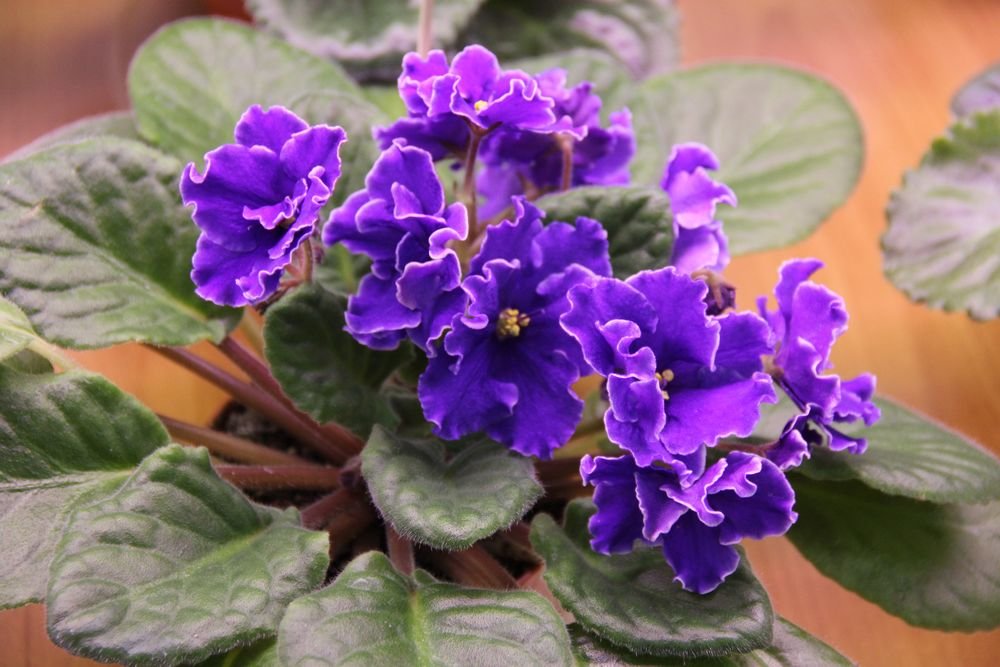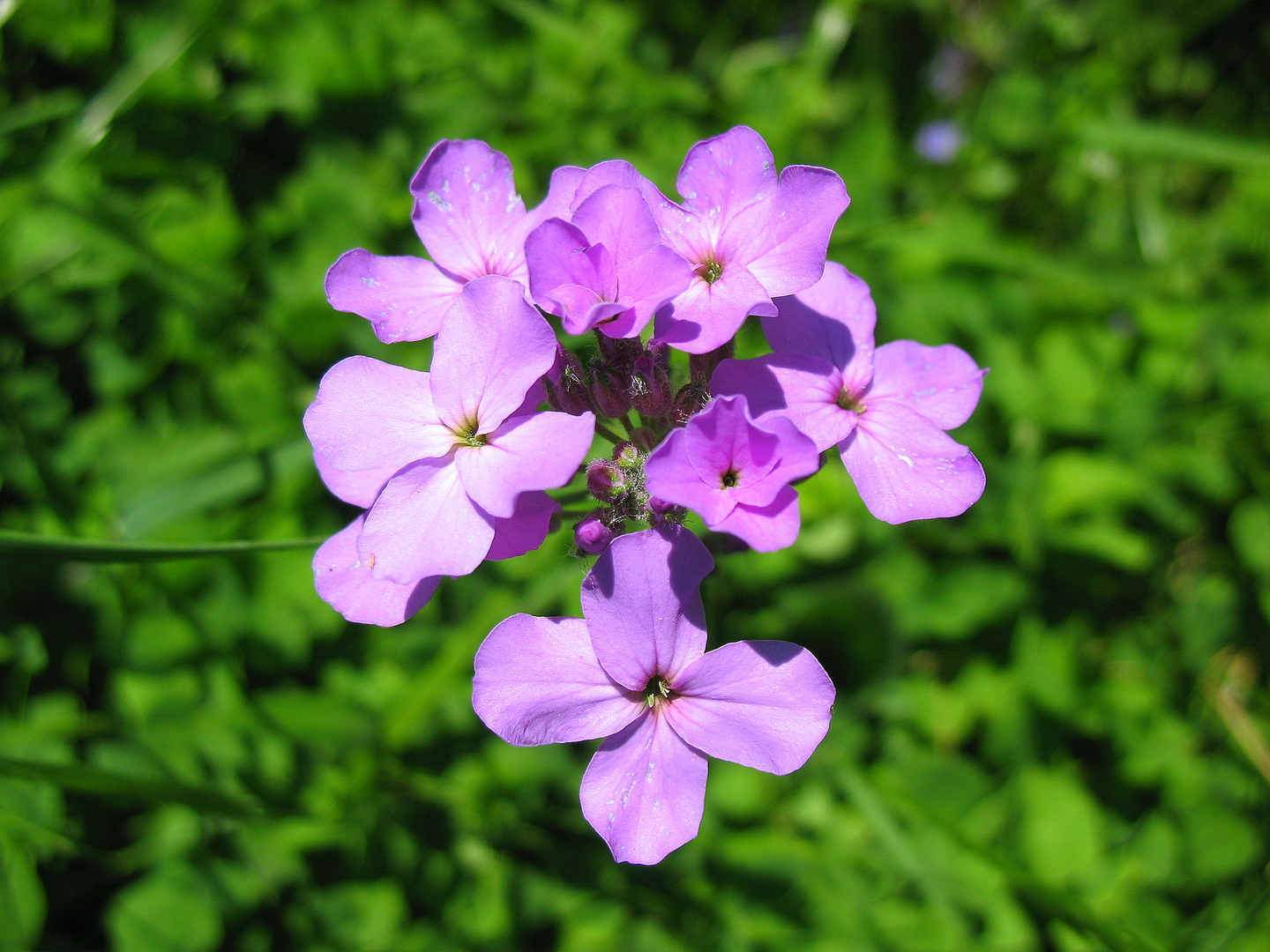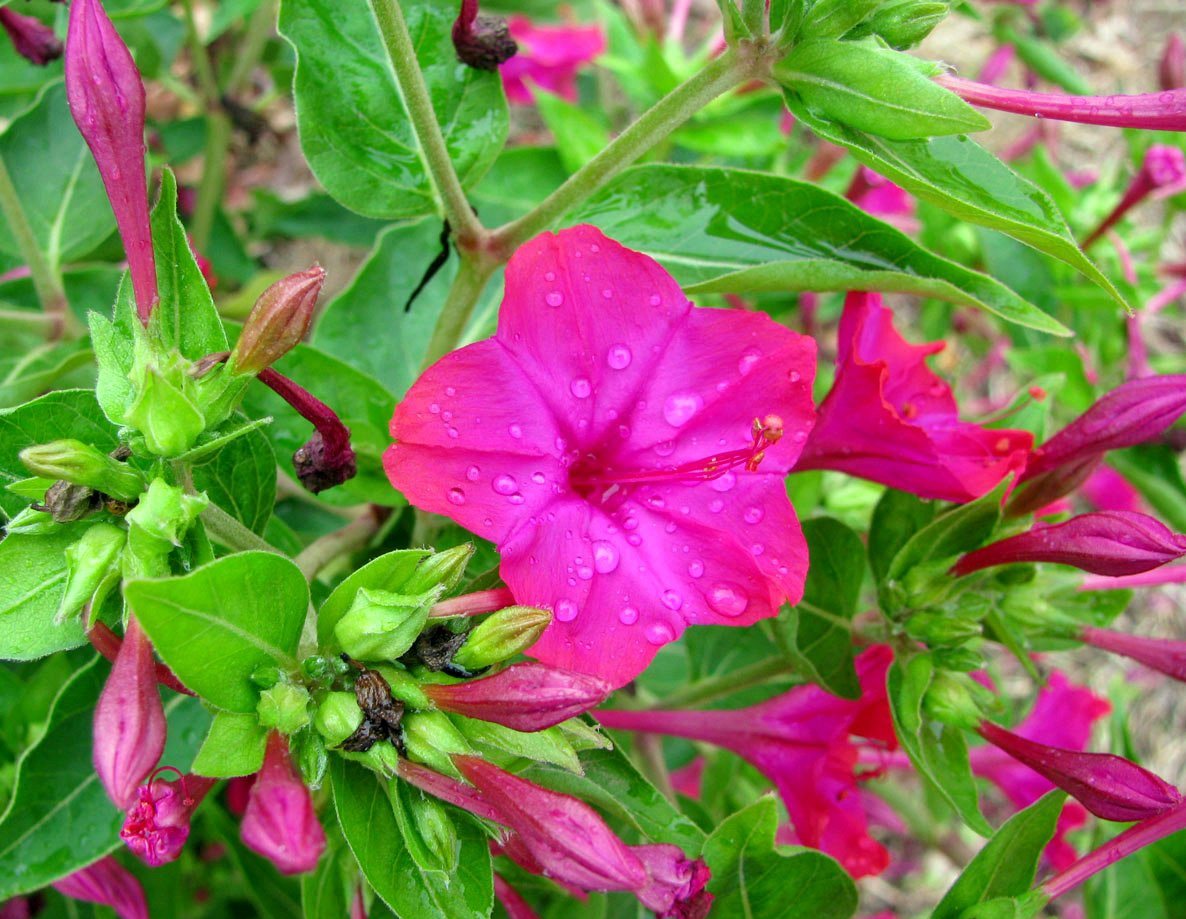Night violet (hesperis) is a biennial plant native to Greece and Asia Minor. Grows in the Caucasus, the Mediterranean, Western Siberia, the European part of Russia.
The stem of the flower is erect, 40-50 cm long, covered with glandular villi. The leaves are serrated, small, glabrous, sharp and linear. The flowers are simple or double, up to two centimeters in diameter, pale lilac or violet.
The plant has a pleasant aroma that intensifies in rainy weather and at night (evening). That is why the flower got the name nocturnal or night violet.
Mattiola bloom at the end of May, flowering time - 1-1.5 months, depending on weather conditions: during the hot dry period - much less. Small, grayish-brown seeds of mattiola remain viable for 2-3 years and are located in a small pod, 6 cm long.
Night violet reproduces well by self-seeding, therefore, in order to prevent your flower beds from overgrowing, it is recommended to thin them out periodically (every 2-3 years).
Vespers. Growing and care
Night violet is an unpretentious flower, it feels great both in semi-shaded areas and in places well-lit by the sun. The plant prefers well-drained slightly alkaline or neutral enriched soils... During the active growing season, it is necessary to carefully monitor watering... Vechernitsa does not tolerate drought well, but at the same time, moisture stagnation and waterlogging of the soil should not be allowed. Watering should be frequent, but not excessive. In order to avoid lodging of tall stems, the plant can be tied up.
The night violet has good frost resistance and does not need any additional shelter in winter. An exception may be frosty winters with little snow - then the flower must be covered.
Reproduction
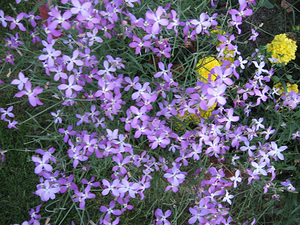 Vechernitsa reproduces well by self-sowing, but if you do not yet have a flower bed with violets, and you really want to get one, you can try to propagate seedlings. To do this, it is necessary at the beginning of April to place the seeds in small containers, scattering them directly over the surface of the soil. Then sprinkle on top with a small layer (up to 1 cm) of peat-humus, compact, moisten and cover the container with plastic wrap. At a temperature of +20 ° C, seedlings will appear in 2-3 weeks... Providing the seedlings with good watering, but without moisture stagnation, you will very soon get healthy plants with 2-3 true leaves. Now the flowers are ready for planting in the open ground.
Vechernitsa reproduces well by self-sowing, but if you do not yet have a flower bed with violets, and you really want to get one, you can try to propagate seedlings. To do this, it is necessary at the beginning of April to place the seeds in small containers, scattering them directly over the surface of the soil. Then sprinkle on top with a small layer (up to 1 cm) of peat-humus, compact, moisten and cover the container with plastic wrap. At a temperature of +20 ° C, seedlings will appear in 2-3 weeks... Providing the seedlings with good watering, but without moisture stagnation, you will very soon get healthy plants with 2-3 true leaves. Now the flowers are ready for planting in the open ground.
Plants transplanted into the garden also need regular watering and loosening of the soil in order to provide open air access to the root system. By the end of summer, powerful and very dense leaf rosettes will appear on the flowerbed, which will begin to bloom in the spring.
In subsequent years, you can leave one plant from the group for self-seeding.
Organic fertilizers should be applied to the soil before sowing.
There are the following varieties:
- "Star Light". A plant with a fairly high stem (up to 50 cm) and flowers of various colors.
- "Evening scent". Quite spectacular plant with a height of 45 cm with an intensively branching stem. It exudes a unique aroma and blooms profusely.
Diseases and pests
Regular waterlogging of the soil can lead to rotting of the root system and possible death of the plant. If you notice any lesions on the leaves - remove diseased specimens immediately before the infection spreads.
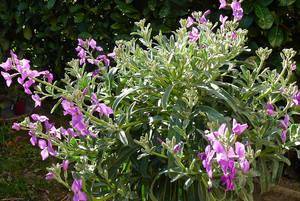 Nocturnal violet can contract the keel (root disease), which is common in all crucifers. In this case, the affected plants must be destroyed (burned), and the soil must be limed and treated with special means.
Nocturnal violet can contract the keel (root disease), which is common in all crucifers. In this case, the affected plants must be destroyed (burned), and the soil must be limed and treated with special means.
In dry weather, a cruciferous flea can appear on the flowers. Its presence is determined by the formation of small holes on the leaves. To get rid of the pest, it is necessary to grind wood ash into dust and sprinkle it on the plants and the soil around them.
When whites (cabbage butterflies) appear, the violet should be treated twice with insecticides (Fury, Tsimbush, Kinmins, Arrivo).
Application and useful properties of nocturnia
Night violet is great for landscaping loggias and balconies, feels great near the house in flower beds and beds. Insofar as Matthiola coexists well with brightly flowering plants (for example, calendula), you can create original scented compositions in your garden or on your balcony.
In the garden, matthiola is best planted in groups of 5-10 plants, at a distance of 35-45 cm from each other. And then in late spring, when the plants bloom together, in your garden bulky spots will appear and the impression will be created that a fragrant lilac fog has frozen over the flower bed.
In addition, the plant is widely used in folk medicine.
The following substances are obtained from the seeds of the night violet:
- cardenolides;
- steroids;
- alkaloids;
- digitoxizide;
- glycobiovichoside;
- biovichoside.
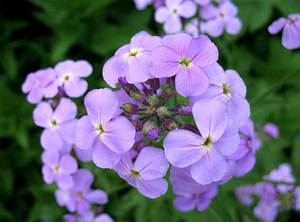 In pharmacology, the plant is used as a diuretic, cardiotonic agent. The leaves contain saponins, flavonoids and essential oils. An antibacterial agent can also be prepared from the leaves. based on alcohol.
In pharmacology, the plant is used as a diuretic, cardiotonic agent. The leaves contain saponins, flavonoids and essential oils. An antibacterial agent can also be prepared from the leaves. based on alcohol.
An infusion of seeds and herb matthiola is used as a diaphoretic drug, as well as for the treatment of rheumatism and gout. For cooking, you need to take 0.5 tsp. night violet seed and 1 tsp. herbs. Mix the components thoroughly and pour boiling water (1/2 l.). Insist for two hours. Take 3-4 times a day, 100 ml.
The grass is harvested in May-July, the seeds in August-September.
Be careful when collecting and harvesting raw materials, as well as when using the herb internally. Since the night violet is a poisonous plant.
Sprouted seeds of matthiola (night violet) are rich in minerals (phosphorus, calcium, magnesium, iron), as well as vitamins A and C. Violet sprouts have a beneficial effect on the restorative resources of the body, have a softening and anti-scurvy effect, help stimulate appetite. In addition, sprouts are also used in cooking. They can be added to a variety of dishes (snacks, pasta, salads, etc.) to add spice.
Thus, the evening party brings not only aesthetic pleasure, but also used as home aromatherapy when planting it on a balcony or garden plot, as well as as a medicinal plant for some diseases.
